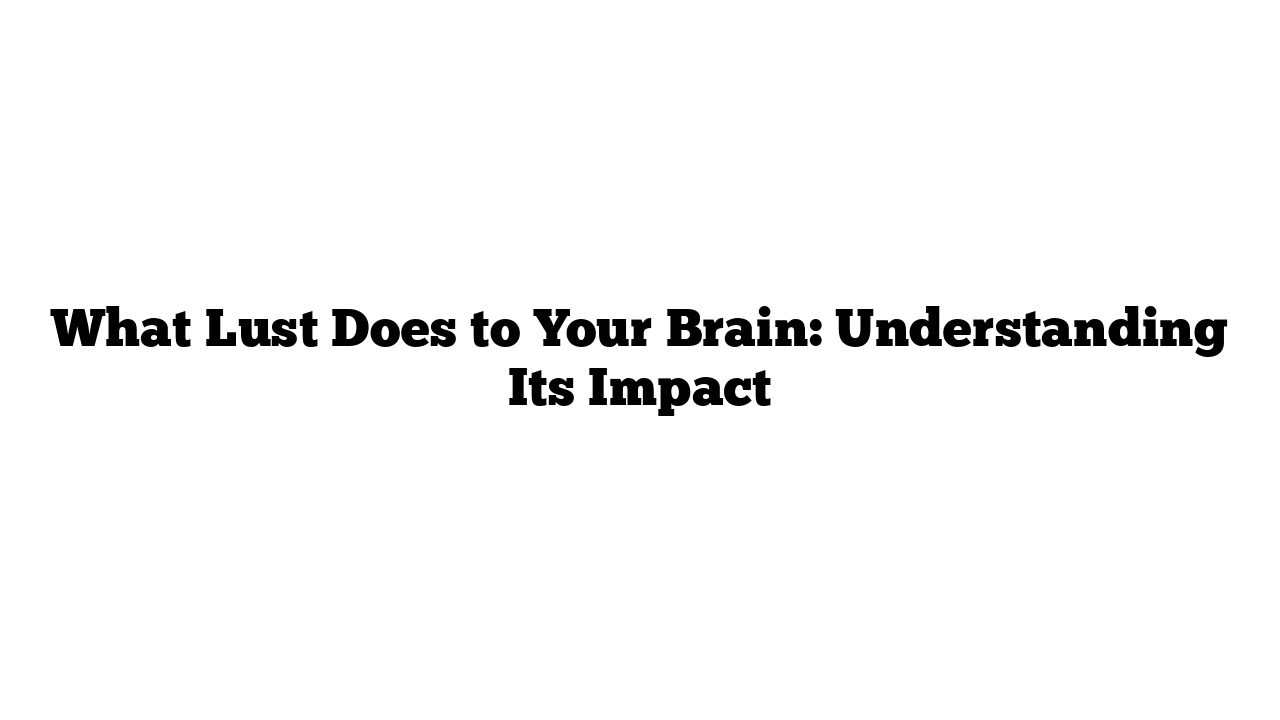Lust is a natural human experience. However, understanding its effects on the brain is essential for managing it effectively. Here’s a closer look at what lust is, how it affects your brain, and practical tips for managing its impact.
What Is Lust?
Lust is an intense desire or craving, primarily for sexual attraction. Unlike love, which involves a deep emotional connection, lust is often immediate and physical. It’s influenced by biological and hormonal factors and is typically short-term. Think of lust as a coin with two sides: a beneficial side and a potentially harmful one.
The Positive Effects of Lust
1. Social Bonding
Lust triggers the release of oxytocin during sexual activity. This hormone enhances feelings of closeness and bonding, even in casual encounters. Some level of lust is necessary for sexual attraction.
2. Increased Pleasure
The desire associated with lust releases dopamine, creating feelings of euphoria and pleasure. This can lead to enjoyable experiences that enhance life satisfaction.
3. Enhanced Motivation
The pursuit of physical connection can increase your motivation and focus on goals related to attraction. For instance, you might find yourself motivated to improve your physical appearance.
4. Boosted Confidence
The thrill of sexual attraction can significantly enhance your self-esteem and confidence, making you feel more positive about yourself.
5. Improved Physical Health
Engaging in sexual activity driven by lust can provide physical benefits, such as cardiovascular health and stress relief. It’s a natural form of exercise!
The Negative Impact of Unchecked Lust
While lust can have benefits, unchecked lust can be harmful, particularly to your mental health.
1. Impaired Judgment
When lust takes over, it can overshadow the part of your brain responsible for logical reasoning—the prefrontal cortex. This can lead to impulsive and risky behaviors, including harassment.
2. Mental Health Consequences
Studies have linked sexual frustration and impulsive behaviors driven by lust to feelings of anxiety, shame, and depression. Unfulfilled desires can impact your overall mental well-being.
3. Addiction-Like Cycles
Lust triggers a dopamine response similar to drug addiction, creating patterns that can be difficult to break. A 2002 study revealed that erotic content activates the same brain areas involved in addiction.
Practical Tips to Manage Lust
If you struggle with managing your lustful feelings, consider these practical strategies:
1. Acknowledge Your Feelings
Admit your feelings without shame. Lust is a natural part of attraction, so don’t feel guilty about experiencing it.
2. Digital Detox
Identify what triggers your lustful feelings. This could be specific songs, social media, or movies. Consider reducing exposure to these triggers. Research indicates that frequent pornography exposure can negatively affect body image.
3. Consciously Distract Yourself
When you feel lustful, find ways to distract yourself. Engage in physical activities like walking or exercising, or mental activities like reading or solving puzzles.
4. Focus on Long-Term Goals
Remind yourself why you want to avoid acting on lust. This could involve being committed to a partner or avoiding the negative consequences of impulsive actions.
5. Channel Your Energy
Use the energy from your lustful feelings to pursue creative projects, deep connections, or personal development. You have the power to direct this energy positively.
Final Thoughts
Understanding lust’s effects on your brain is crucial for personal growth and relationships. While it can lead to positive experiences, being mindful of its potential pitfalls is equally important. You are in control of how you manage these feelings, and finding balance is key.
If you’re interested in learning more about the impact of lust and pornography, consider exploring additional resources to deepen your understanding.
What are your thoughts on lust? Share your insights below!
For more information, visit medicaltimes.io.
